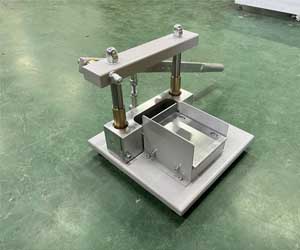conductor resistance constant temperature measurement equipment
Understanding Conductor Resistance Measurement Equipment at Constant Temperature
The measurement of conductor resistance is a critical aspect in various fields such as electrical engineering, physics, and materials science. Accurate measurement ensures that electrical systems operate efficiently and safely, avoiding potential failures and enhancing performance. Among the various methods employed, measuring resistance under constant temperature conditions is particularly important. This article aims to explore the principles, equipment, and importance of conductor resistance measurement at constant temperature.
Why Measure Resistance?
Resistance is a fundamental property of materials that influences how they conduct electricity. Every conductor, such as copper or aluminum, exhibits a specific resistance depending on factors like its material properties, geometrical dimensions, and temperature. The relationship between resistance and temperature is pivotal resistance tends to increase as temperature rises for most conductors. Therefore, to obtain accurate resistance measurements, controlling and stabilizing temperature is essential.
The Constant Temperature Principle
To mitigate the impact of temperature variations, measurements are often taken at a constant temperature. This approach allows for consistent and repeatable results, minimizing errors associated with thermal fluctuations. Constant temperature measurements can be particularly useful in research and development, where precise electrical characteristics are crucial for material selection and application.
Equipment Used for Resistance Measurement
Several pieces of equipment are designed specifically for measuring resistance while controlling temperature. The most common include
1. Four-Wire Measurement Setup This method utilizes four leads—two for current injection and two for voltage measurement. By minimizing the effects of lead resistance, the four-wire method provides highly accurate resistance readings. This setup is crucial when measuring low resistances, where the voltage drop across the leads may significantly alter the results.
2. Precision Temperature Controllers Accurate resistance measurement cannot be isolated from temperature control. Precision temperature controllers maintain the sample at a predetermined temperature, often using thermoelectric coolers or heating elements. These controllers ensure that the temperature remains stable during the measurement process, allowing for accurate recording of resistance.
3. Cryogenic Measurement Systems For materials that exhibit superconductivity or unusual properties at low temperatures, specialized cryogenic measurement systems may be employed. These systems can reach temperatures close to absolute zero, allowing researchers to study resistance variations under extreme conditions.
conductor resistance constant temperature measurement equipment

4. Resistance Bridges Instruments such as the Wheatstone bridge are often utilized to measure resistance with high accuracy. They work on the principle of balancing two legs of a circuit to compute the unknown resistance. Advanced digital resistance bridges can incorporate temperature compensation features, increasing measurement reliability under varying conditions.
5. Computerized Data Acquisition Systems To facilitate modern research, many laboratories employ computerized systems that automate measurement processes and collect data systematically. These systems can track temperature fluctuations over time, ensuring that resistance measurements are not only accurate but also accompanied by relevant data regarding temperature stability.
Importance of Constant Temperature Measurements
Maintaining a constant temperature during resistance measurements is critical for several reasons
- Accuracy As mentioned earlier, resistance can vary significantly with temperature changes. Constant temperature measurements eliminate this variability, yielding reliable data.
- Material Characterization In material science, understanding how and why a conductor's resistance changes with temperature can inform decisions about material suitability for specific applications.
- Safety and Efficiency In electrical systems, knowing precise resistance values helps in designing safe and efficient circuits, preventing overheating and energy loss.
- Research and Development In the field of semiconductor and superconductor research, constant temperature resistance measurements contribute to breakthroughs in technology and materials.
Conclusion
In summary, conductor resistance measurement at constant temperature is an indispensable aspect of electrical engineering and materials science. Utilizing specialized equipment ensures that measurements are not only accurate but are also relevant to real-world applications. As technology advances, so will the tools and techniques available for precise resistance measurement, paving the way for innovations in various scientific and engineering disciplines. Understanding and implementing these practices will lead to enhanced efficiency, safety, and performance in electrical systems and beyond.
-
The Role of Tensile Force Testers in Quality Control and Material Science
NewsAug.01,2025
-
Maintenance and Safety Tips for Aging Ovens
NewsAug.01,2025
-
Density Balance in Forensic Science
NewsAug.01,2025
-
Advanced Optical Measurement Technologies
NewsAug.01,2025
-
A Buyer’s Guide to Tensile Test Machines
NewsAug.01,2025
-
Why the Conductor Resistance Constant Temperature Measurement Machine Redefines Precision
NewsJun.20,2025
 Copyright © 2025 Hebei Fangyuan Instrument & Equipment Co.,Ltd. All Rights Reserved. Sitemap | Privacy Policy
Copyright © 2025 Hebei Fangyuan Instrument & Equipment Co.,Ltd. All Rights Reserved. Sitemap | Privacy Policy

